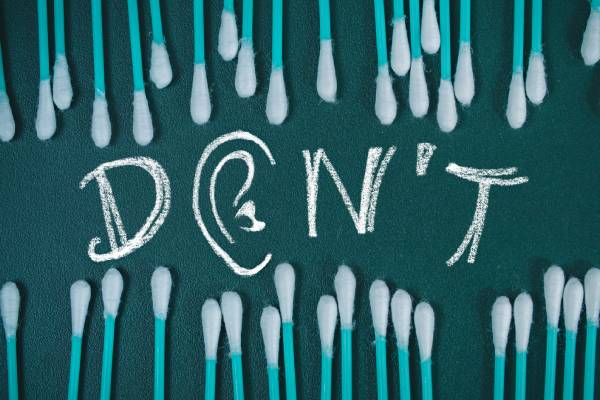This website uses cookies so that we can provide you with the best user experience possible. Cookie information is stored in your browser and performs functions such as recognising you when you return to our website and helping our team to understand which sections of the website you find most interesting and useful.
Earwax Removal
Earwax removal is required when earwax accumulates in the ears and causes a blockage. Earwax, also known as cerumen, is part of the ear’s natural protection against dust and debris. The glands in the ear produce cerumen to lubricate the ear canals and keep dust and debris from getting too far down into the ear canal. Cerumen typically clears itself from the ears, but in some instances, it can accumulate and cause a blockage, thus affecting hearing.

Symptoms and Causes of Earwax Blockage
Symptoms of earwax blockage include:
- Earache
- Tinnitus (noise in the ear)
- Hearing loss
- Ear pressure
There is no one cause for wax build-up in the human ear. Some people tend to produce more significant amounts of earwax than others. When this quantity becomes excessive, it is essential to remove the build-up before the earwax becomes impacted. It should be noted that the use of hearing aids, earplugs, and cotton swabs may impact earwax for some people. Irrespective of the cause, blockage caused due to earwax should not be ignored and should be treated appropriately.
Keeping Your Ears Clean
The natural movement of your facial muscles and jaw when you chew or talk typically creates enough movement for earwax to be moved toward the outside of the ear canal. In this way, your ears keep themselves clean naturally. However, if you notice a problem with wax build-up or blockage, earwax removal becomes important. This can be done at home or your doctor’s office, depending on the size and severity of the blockage.
Cleaning Your Ears at Home
Cleaning earwax from your ears at home can be carried out by:
- Using a soft, warm cloth to remove wax from the outer ear.
- Using drops of warm olive oil, almond oil, water, or a commercial solution to remove larger amounts of stubborn earwax.
- Irrigate the ear and gently rinse with water.
Additionally, you can also use an over-the-counter at-home earwax removal kit. The kit will usually have some type of liquid to soften the earwax and a rubber bulb syringe to flush the ear with water.
However, if you have an ear condition that precludes you from using store-bought earwax removal kits, check with your doctor first to see if it is safe for use.
Cleaning Your Ears at the Doctor’s Office
If the earwax has become too hard or is difficult to clean at home, you may need to visit a doctor’s office for earwax removal. Two methods are generally used for cleaning earwax: irrigation and curettage.
Irrigation is the most commonly used method for clearing earwax. The doctor uses a more potent medicine than those in at-home ear wax removal kits to dissolve the wax and then use irrigation to wash it away. Carbamide peroxide is typically the main ingredient in these medications.
Curettage is not used as commonly but involves using a curette (a long curved instrument) along with suction to scrape earwax gently from the ear canal.
Avoid Using Cotton Swabs and Ear Candles for Earwax Removal
Cotton swabs are very popular for at-home earwax cleaning. However, doctors typically advise against cotton swabs because they can cause more damage by pushing the earwax further down the ear canal and cause more serious problems like eardrum ruptures or earwax impaction.

Doctors stress the use of cotton swabs only for the outer ear. Never insert cotton swabs or other small objects in your ear canal. Ear candles should also never be used for earwax removal. They have historically proven to cause serious injury to the ear.
Earwax Removal at Advanced Audiology Care
If you suspect you may have earwax build-up or impacted earwax, contact Advanced Audiology Care at (848) 231-6637 or request an appointment online.


